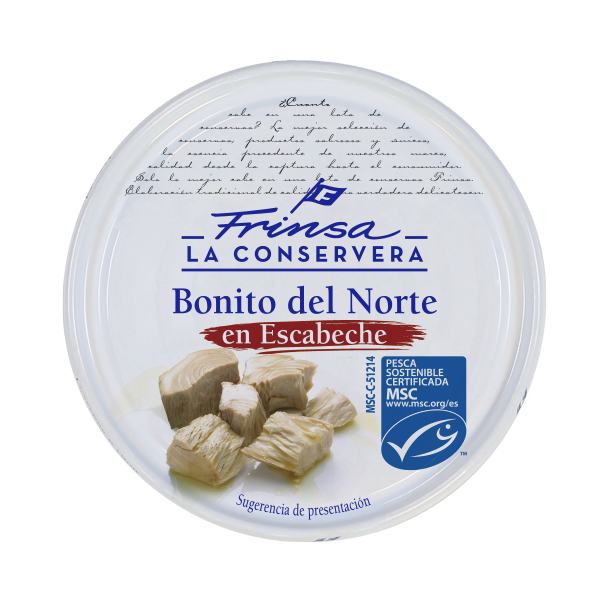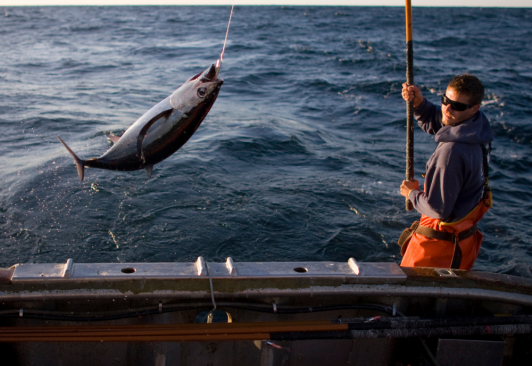WHITE TUNA IN PICKLED SAUCE
Last updated: 2021/11/12
Frinsa
Frinsa's white tuna is caught one by one exclusively during the fishing season, which is famous in the north of Spain. This product is accompanied by a light characteristic pickled sauce, respecting the original flavour and unique texture of Frinsa's white tuna. It is a large size can, which is perfect for catering businesses.
This product is made with pole and line tuna, removing the meat upon entering the factory and immediately packed in the cans. This method efficiently preserves the quality of the meat, before it lands on your plate.
Frinsa only uses tuna caught from pole-and-line or trolling vessels, which supports their sustainability efforts as well as their initiative to provide healthy, delicious and high-quality tuna products to their consumers.



At A Glance
- Gear Matters!
Frinsa source all of their tuna by one-by-one. This technique is an active type of fishing that catches one fish at a time. This has been practised by artisanal fishers for centuries and works in harmony with the ocean environment, ensuring zero bycatch, minimal lost gear, and combats overfishing.
- What's in a name?
The scientific name for this tuna is Thunnus alalunga, either white or albacore tuna. This fish is of average size, ranging between 50 and 80cm and has a dark blue upper back and silver body and belongs to the Scombridae family. It is known for its succulent texture and juicy meat.
- Frinsa's Marinade Sauce
This product is bathed in a mild and characteristic marinade sauce made with olive oil and vinegar. This conservation practice was already used in the ancient Rome as a sauce similar to the fish dish 'garum', of which there are many variations across the globe, including the Arabic cuisine and Spanish culinary techniques.
Thanks to this conservation method, the product does not need to be kept cold (unless it is open and non totally consumed) and can be kept for an average of four years. It can be consumed directly from the can or fresh or as part of other recipes.
Dive Deeper...

Frinsa
Pole-and-line
Albacore Tuna
